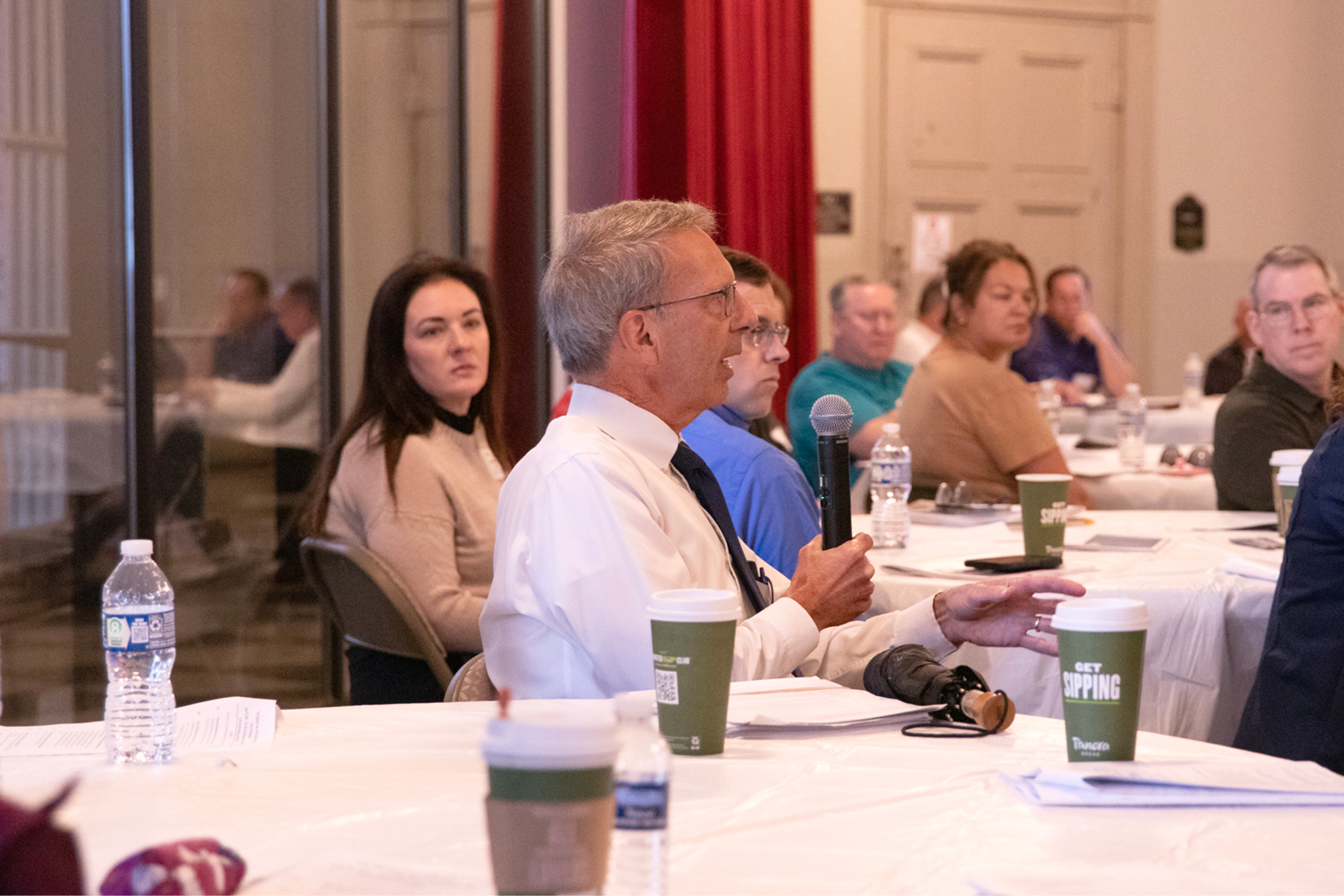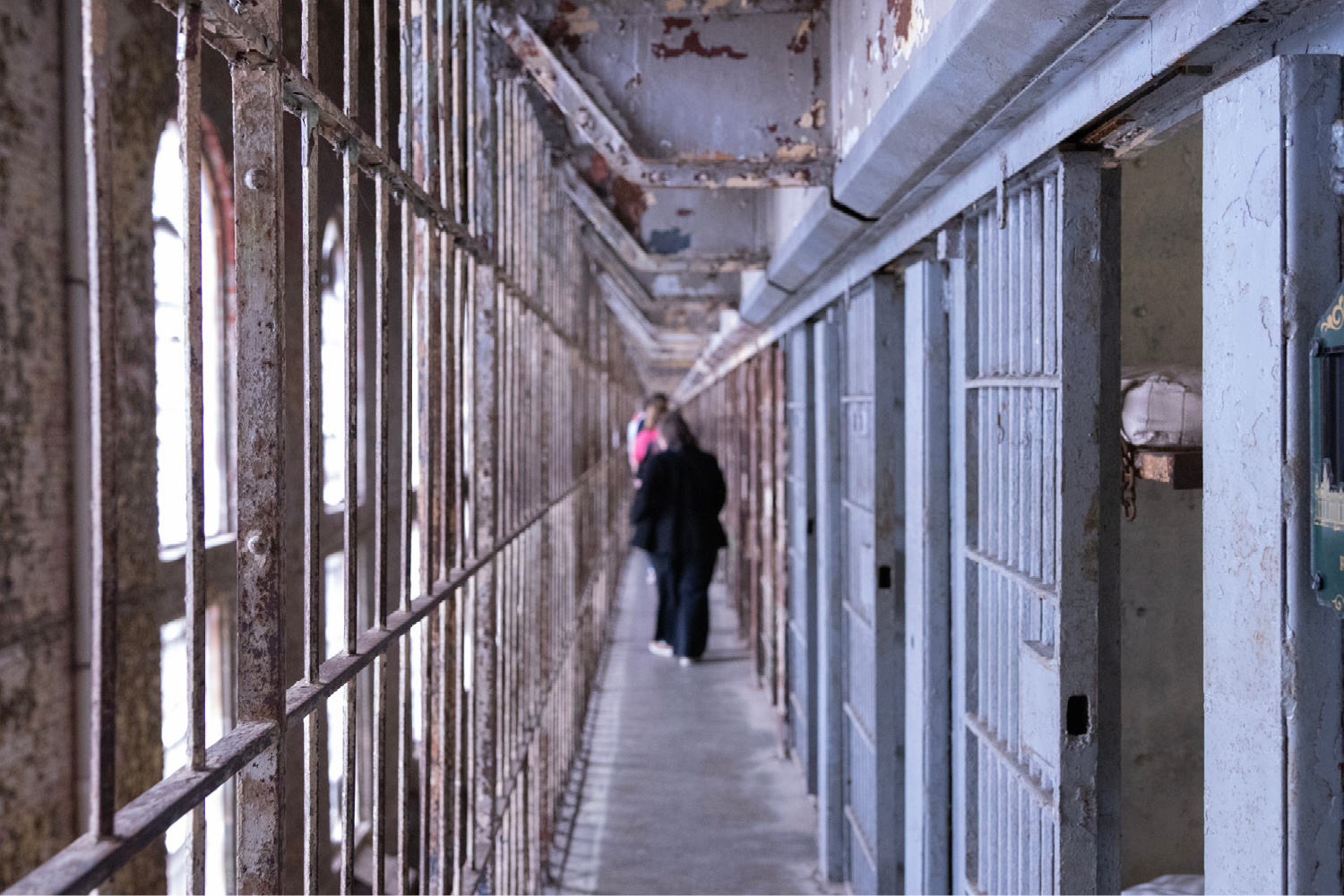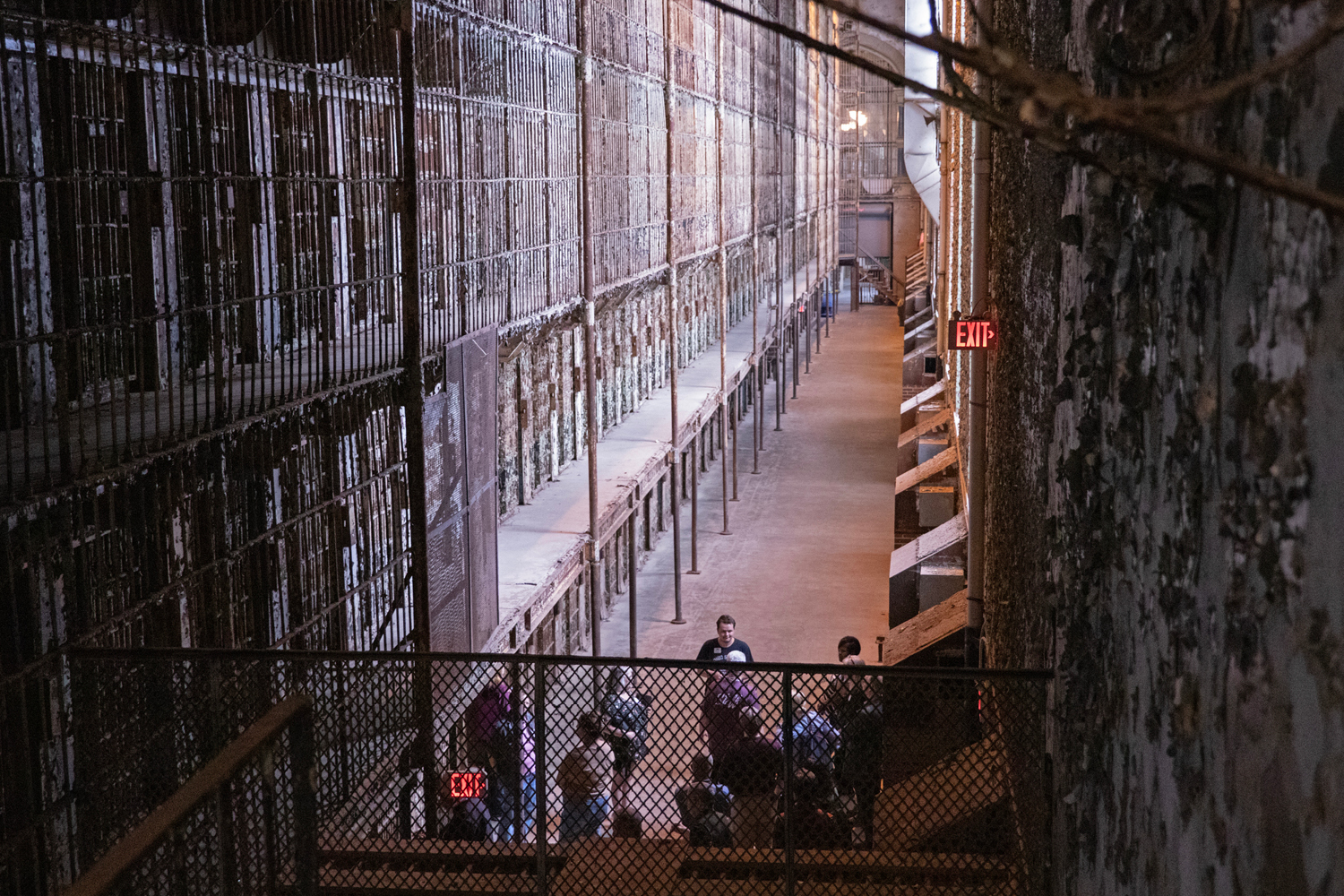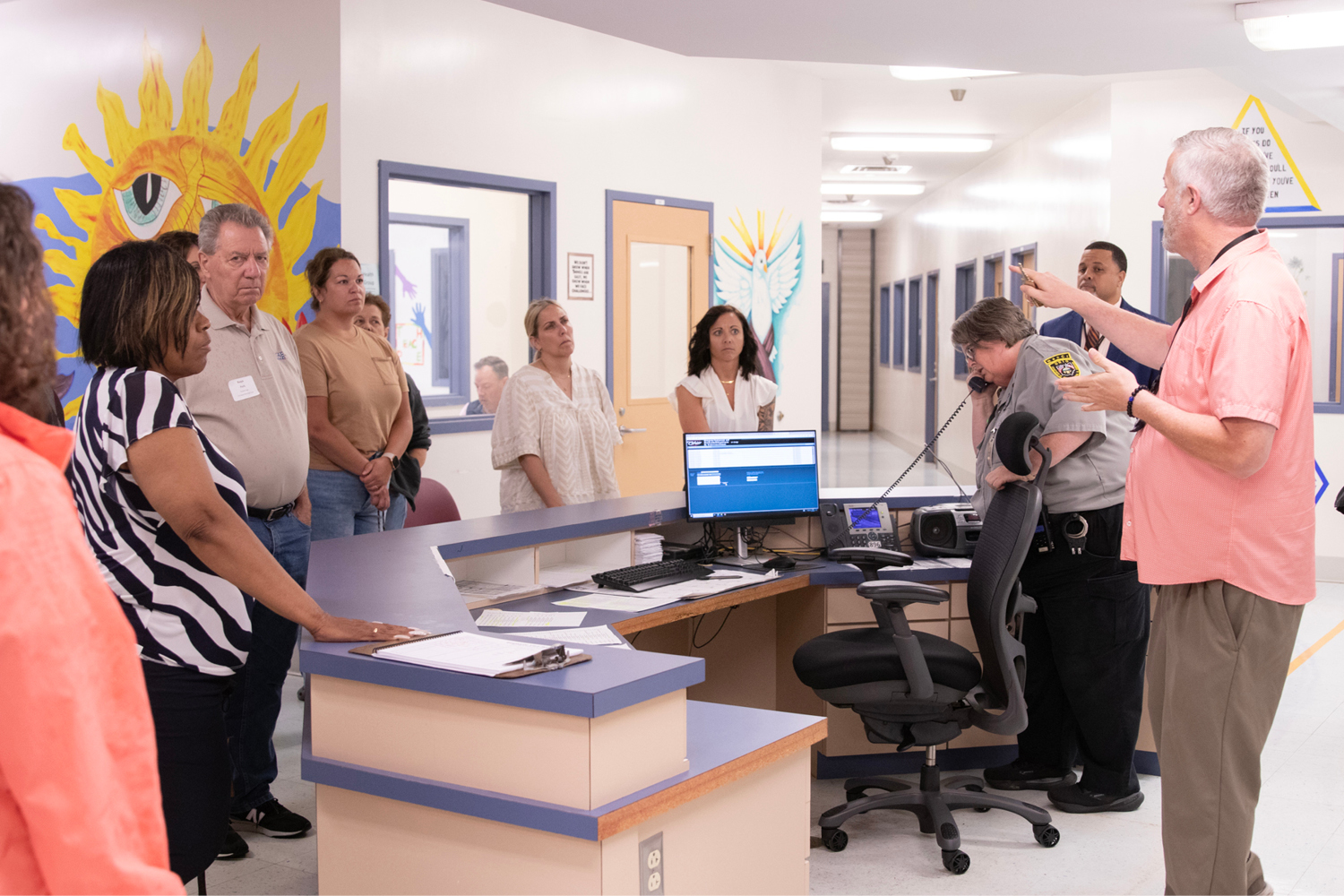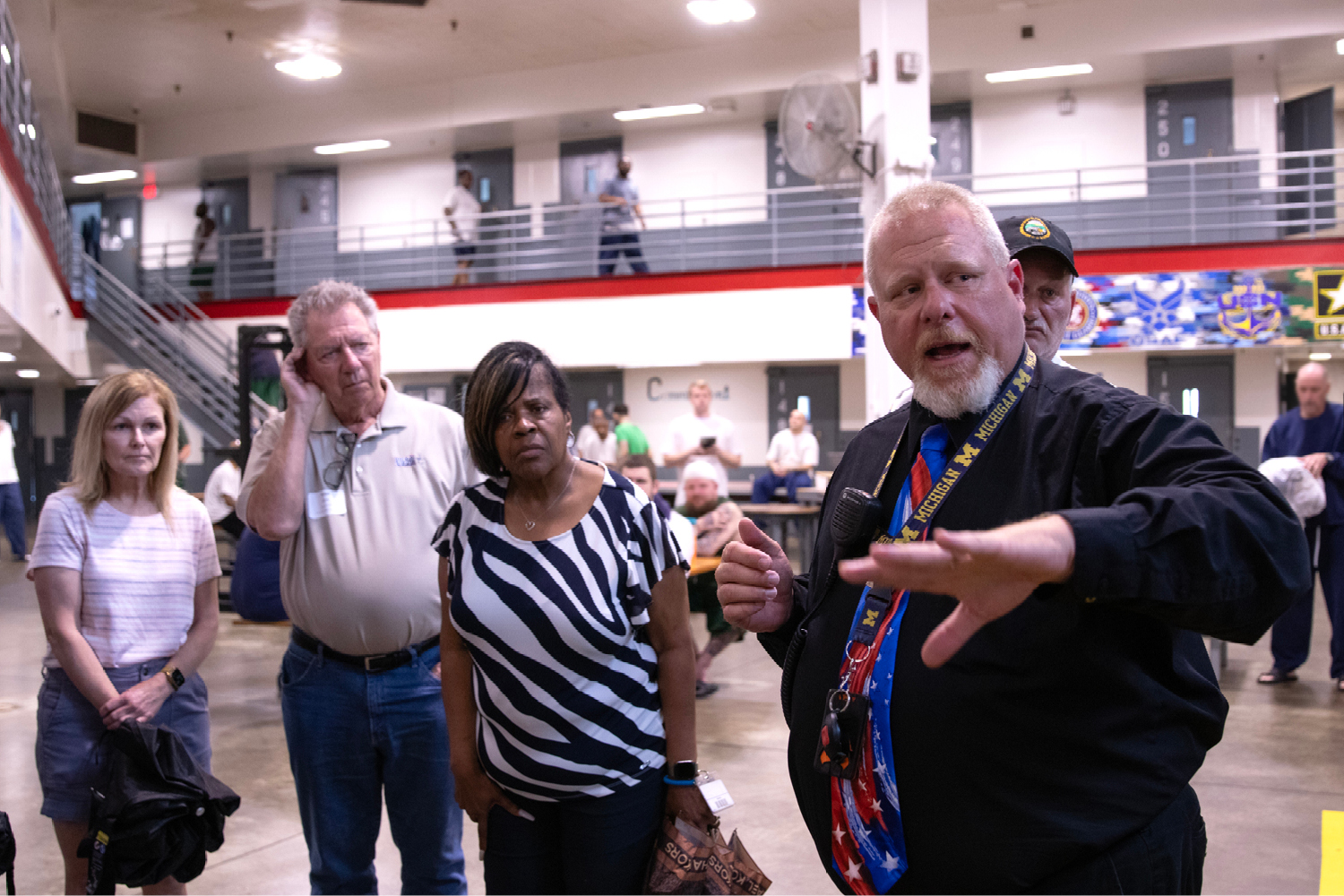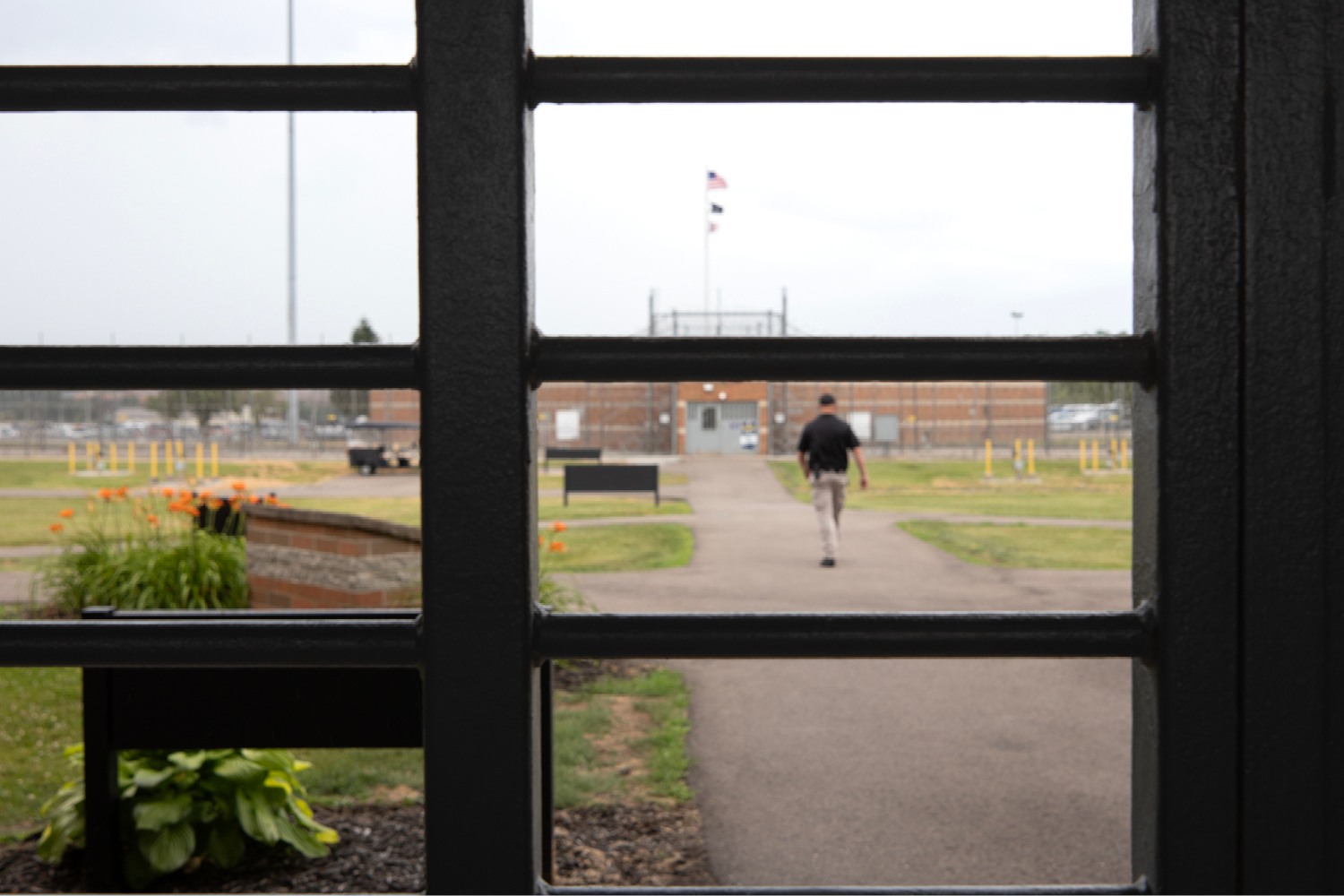Finding Hope in Prison
During a day-long seminar organized by the Ohio Judicial College, judicial officers from across the state met in Mansfield to experience life in both historic and modern-day prison.
The 67 judges and magistrates enrolled in the Crime and Punishment program began their day at the Ohio State Reformatory, which is most popularly known as the filming site for Shawshank Redemption.
“It’s very unique to have this prison that’s been preserved from the 1800’s,” said Ohio Judicial College Director Christy Tull.
She explained that becoming immersed in the environment prompts the judges and magistrates to reflect on the justice system and imagine what it was like over 100 years ago.
“It’s not a field trip,” said Tull. “It is a learning experience which gets people out of the classroom and into a real-life setting. It’s incredibly powerful.”
There are pre-course reading assignments and guided discussions to enrich the education.
Participants discussed the vast changes in Ohio correctional history, from a period of lashings and hangings that pre-dates prisons, to a purely punitive prison system often deemed inhumane, to the current system that includes 28 prisons, six parole regions, community-based corrections facilities, as well as probation and diversion programs.
After touring the facility, the group jumped forward in time to the present-day Mansfield Correctional Institution (ManCI), where they experienced daily life in a maximum-security prison.
Becoming Immersed
Sitting in a row at ManCI, nine incarcerated men convicted of crimes as serious as murder and rape welcomed the group of judges and magistrates to the place some of the prisoners will call home for the rest of their lives.
The panelists were identified by staff as leaders within the prison who are fully engaged in rehabilitative programming and serve as mentors to their peers.
Even though some of the men may never leave prison, each took pride in sharing his story of growth and change while incarcerated.
“This is the greatest thing that’s ever happened to me,” said Derrick Lartdale of the 62-year prison sentence he is serving.
Lartdale has been in prison since 1998. Now at age 57, he still won’t be eligible for release until he is 94.
During his time at ManCI, Lartdale said he discovered faith that transformed him. At one point, he wanted to die after suffering from depression for years. Today, he shares his faith, speaks to his kids daily, and prays for his family.
According to Lartdale, it took going to prison for him to appreciate everything on the outside that he has lost.
“We need judges. We need magistrates,” said Lartdale. “I thank the judge who sentenced me.”
For Brendan Weems, who is now 10 years into his 15-year sentence, his calling is preparing prisoners for their release by registering them for Medicare or Medicaid and helping new people acclimate to prison by changing their ways of thinking.
“A lot of times, our thinking gets us in the position we’re sitting in,” said Weems.
Changing Lives
Messages echoing Weems’ sentiment decorate the walls of the various buildings at ManCI.
“If you always do what you’ve always done, you’ll always get what you’ve always gotten,” is painted large inside the mental health services building where inmates receive counseling and assistance during crisis situations.
Changing mindsets to curb criminal behavior is part of the mission of the Ohio Department of Rehabilitation and Corrections (ODRC).
“We try to change lives to make sure that when they leave prison, they leave better than when they came,” said Deputy Director of Prisons Ernie Moore.
He explained that 90% of incarcerated people will eventually go home, so ODRC staff tries to find the right resources for each prisoner.
“I want the judges to feel confident when they send somebody to prison that the prison is putting their best foot forward,” said Moore. “We’re going to do everything we can to rehabilitate.”
Reflecting Thoughts
Some of the most powerful moments throughout the day were the interactions judges and magistrates had with inmates.
“I’m different,” said Judge Deborah Turner of Cuyahoga County Common Pleas Court when the day ended. “What they had to impart and share with us was encouraging.”
Judge Turner recently had the experience of watching her own relative go to prison.
“I know what it feels like to sit in the back of the courtroom,” she said. “I know that helplessness. I know that hopelessness.”
When she heard the panelists share their stories of incarceration and finding success behind bars, Judge Turner told them the common theme she saw among them was hope.
“It’s important to pour something into you,” she told the panel, referencing hope and purpose. “You’ve got to have something inside of you to feed off of while you’re in here.”
The nine inmates seated at the front of the room nodded their heads in agreement with the judge.
“I feel better about what I saw today,” said Judge Nicole Khoury of Toledo Municipal Court. “Seeing what I saw made me feel better about the attitude of the staff. They want them to do better.”
While it weighs heavily on Judge Christen Finley of Lawrence County Common Pleas Court to send someone to prison when all other options have been exhausted, she said the experience at ManCI solidified her thinking about sentencing.
When prisoners were asked if the courts could have done more to intervene, Judge Finley said their overall response was no, and that they had to do their time to start making positive changes.
“Sometimes going to prison is what saves people’s lives,” said Judge Finley.





